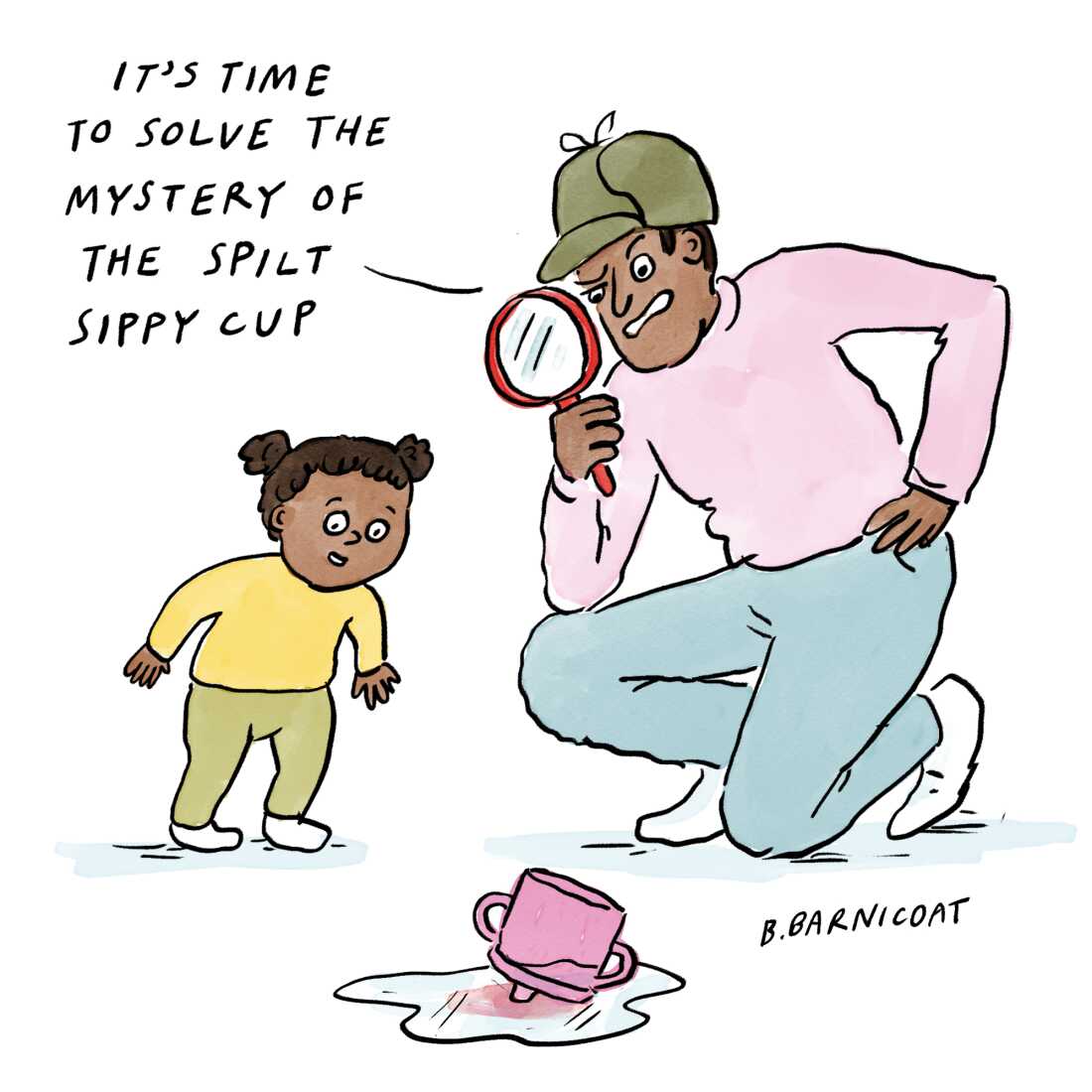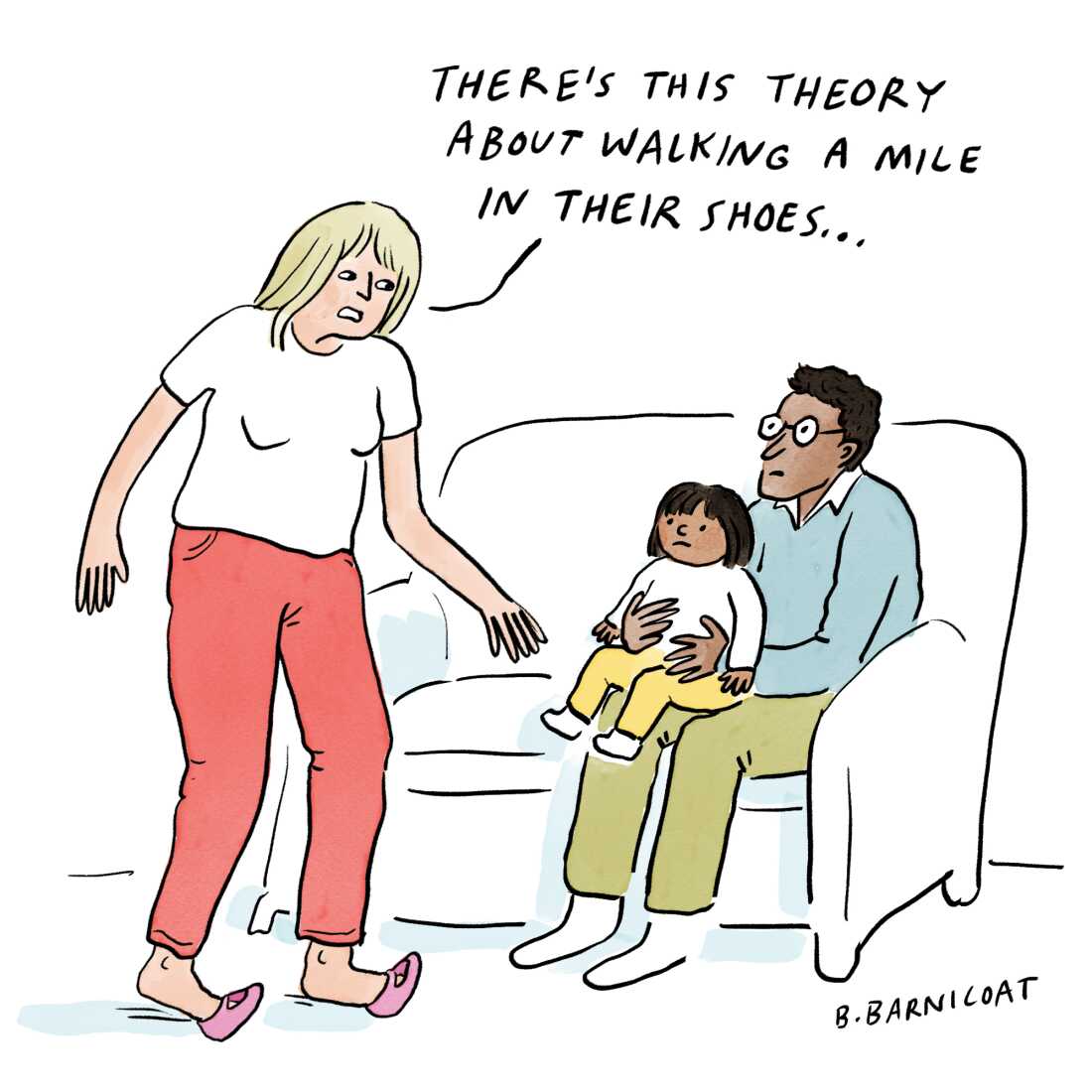Lifestyle
On Good Footing After a Polo Tournament

Even before Dr. Orion Paul Mercaitis saw Olivia Louise Stringer, he heard her trying to get a fractious horse to settle down in October 2023 in the back of a trailer at New Haven Farm in Aiken, S.C.
“I don’t have a string of polo ponies, so I had to lease one,” said Dr. Mercaitis, 35, who lives in Guilderland, N.Y., outside Albany, and is a senior manager in the United States market access division for oncology drugs at Pfizer, the pharmaceutical company.
When he landed that job, Mr. Mercaitis couldn’t think of a better way to celebrate than playing in a three-day polo tournament a couple of weeks later in Aiken, alongside Adam Snow, a polo champion and an owner of New Haven Farm.
“Get on the horse,” said Ms. Stringer, when she brought out a thoroughbred named Flash, one of three ponies for him to try that day. “I’m pretty direct,” she added. “He definitely laughed.”
Ms. Stringer, 40, a professional women’s polo player, owns Liv Polo, which provides rentals, sales, training and coaching in Aiken and the Northeast. She started playing polo at 13, representing United States in matches in international women’s polo in India in 2018 and Australia in 2022.
“We were pretty surprised to see each other,” said Ms. Stringer, who graduated with bachelor’s degrees in equine science and English from Colorado State University, and whose clients are usually adult amateurs, 50-plus. “He assumed I was older as well. He was a young, attractive person.”
Dr. Mercaitis, who graduated with high distinction with a bachelor’s degree in biology from the University of California, Berkeley, fell in love with polo in his 20s while studying at Oxford, where he received a master’s degree in musculoskeletal sciences in 2020. He also has a medical degree from the University of Miami, and a Master of Public Health in epidemiology from Harvard.
“This is the kind of guy I should consider dating when the time comes,” Ms. Stringer recalled thinking. Her previous marriage ended in divorce earlier that year, and she was not yet dating.
After Dr. Mercaitis left Aiken, they sent each other texts about polo, shared photos of their dogs, and she sent him a few images of his favorite ponies.
“We were both being professional,” said Dr. Mercaitis, who thought “she was so perfect and unfathomable.” He figured he didn’t “have a chance.”
As New Year’s Eve approached and Ms. Stringer asked him if he had any plans, it seemed like an opening to him. He asked if she would like to celebrate at Wildflower Farms, a new Catskills resort in Gardiner, N.Y.
On Dec. 30 — after she visited family in Florida, then flew up to Albany — he drove them down to the Catskills.
“I had my Jack Russell, Comet, very much my sidekick,” Ms. Stringer said, and he brought his golden retriever Sirius (he named his polo team after him).
Both dogs got along, and so did they.
“We started talking and never stopped,” she said. “It was a three-day first date,” with farm-to-table meals, soaks in hot tubs and hikes with their dogs.
After dinner on New Year’s Eve, they had a first kiss, and as the band later played “Auld Lang Syne,” they began the year with another kiss and Champagne.
Before Ms. Stringer returned home, he gave her a tour of his hometown, the Albany area. He took her for flying lessons in Saratoga, N.Y., where she then flew a helicopter around the New York State Capitol. They landed in an Albany airfield, and then she took a Cirrus SR20 plane for a spin around the capitol. He is finishing up a pilot’s license in both.
Later in January 2024, she joined him for Robert Burns Night, an annual celebration of the Scottish bard, on the Royal Yacht Britannia in Edinburgh. He donned a kilt with his Oxford College tartan and she a matching sash as they enjoyed haggis and poetry readings.
In March, he drove to Aiken to celebrate her birthday, but the night before Easter he received shocking news. His father had died. Ms. Stringer stood by him during the next difficult weeks, and traveled to Albany to be with him.
“I didn’t know they made women like this,” he said, and then he stayed in Aiken until the end of May.
Over the summer, they spent time with her family in Baltimore, and her parents then joined them on a trip to Provincetown, Mass., in Cape Cod in late August.
During that trip, as the two walked along a quiet stretch of beach at Race Point, he pretended to see a dolphin to distract her. After she looked for it, and turned back around, he was on one knee.
On March 1, the Rev. Canon Calhoun Walpole, the rector of St. John’s Episcopal Church in Johns Island, S.C., officiated before 72 guests, at least 30 were polo players, at Grace Chapel on Wadmalaw Island, S.C., where the bride walked down the aisle to a trumpet player and pianist playing Pachelbel’s “Canon in D.”
Later, at the Charleston Yacht Club, where two polo mallets with their initials appeared on cocktail napkins and other items, they enjoyed a Southern menu including shrimp and grits, barbecued pulled pork and brisket.
During the following week, on March 5, her birthday, their offer was accepted on a dream farm in Aiken — a 30-acre, 27-stall barn with a polo field, and plan to call it Outfoxed Farms.
“Olivia is bright and witty, and always a step ahead of me,” he said, with a laugh.

Lifestyle
‘Why does my toddler … ?’ Your kiddo’s most confounding behavior, decoded

Parenting a two year old is such a wild ride. The other day, my son started the morning with an explosion of cuddles, followed immediately by refusing the blueberry muffins he had declared his very favorite the week before. Once we made it through breakfast, the daily Battle of Putting on Shoes was still ahead!
Sometimes, I feel like I’m playing a game of emotional ping pong with my kid. And that can be hard for both me and him to manage.
Fast-changing feelings and defiant behavior are developmentally appropriate for one to three year olds, says pediatric psychologist Roger Harrison. They’re a way of building your kid’s sense of self — and understanding their place in the world.
But for parents, they can often be a source of frustration, he says. When tantrums and power struggles arise from those emotions, it can be easy for us adults to lose our patience.
Reframing your toddler’s boundary-pushing as a means of social and emotional learning might offer some relief, says Harrison, a division chief within the department of child and adolescent psychiatry at Children’s Hospital of Philadelphia.
“When we understand the ‘why’ of certain behaviors and place them within an appropriate developmental context, it allows parents to step back from the emotion and address the behavior strategically,” he says.
Harrison and other child development experts answer questions about common toddler behaviors — and offer advice on how to respond in the situation.
Why does my toddler … say “NO!” to everything, even to things they like?
A toddler’s contrarian nature is just par for the course at this stage of development, says Harrison. In addition to developing more language and cognitive and motor skills at lightning speed, they’re just beginning to understand that they are their own unique person separate from their caregivers. With this new awareness comes a need to test boundaries in order to establish independence.
“Part of that process of figuring out who I am is to learn me in opposition to all the things in the world,” he says.

So if your toddler gives you a resounding “NO!” to his favorite popsicle or book before bedtime, what he might be actually doing is trying to flex his newly discovered self-awareness. His “no” could translate to, “Check this out, Mommy! I’m a person with my own mind and opinions now!”
⭐ Parent tip: What should you do if you need your child to say “yes” to, say, brushing their teeth, getting in their car seat or leaving the playground?
Model a calm response, then kindly but firmly let them know what’s going to happen next, says Jamie Glowacki, a parenting and potty training coach and the author of Oh Crap! I Have a Toddler. You might say: Yes, we do need to leave the playground. You can either go down the slide one more time and walk out with me, or I can carry you out right now.
Why does my toddler … say everything is “mine”?

In Toddlerland, “the rules of ownership are different,” Harrison says. “If it’s mine, it’s mine. If it’s yours and I want it, it’s also mine.”
As a child starts to build their identity and independence, they’ll often try to exert control over their environment through possession, Harrison says. It helps them understand themselves and their attachments in the world.
For example: my mom has black hair, so I have black hair. My sister has a cool toy, so I have a cool toy. I am a kid with black hair and a cool toy! Mine, mine, mine! By making claims like these, a toddler can test the boundaries of their environment to better define who they are.

So if your toddler claims every book in the library is hers or refuses to share even her least favorite stuffie on her playdate — don’t stress, says Harrison. She’s not being selfish, she’s just stretching out that newfound sense of self.
⭐ Parent tip: If you want your kid to share, model then practice the behavior, says early childhood educator Chazz Lewis. For example, in the aftermath of a toy dispute with another child on the playground, teach your toddler to ask for a turn by reaching your palm out assertively and saying, “turn, please,” he says. Do a few practice rounds before sending them back out to play.
Why does my toddler … want to lick/smash/crash into everything?

Does your little one love to spill every container they can get their hands on, lick colorful wallpaper or bounce against your living room like it’s a life-size pinball machine?
They may simply be trying to gain some sensory information about their surroundings, says Layne Deyling Cherland, a longtime preschool teacher-turned-content creator who focuses on adult-toddler dynamics.
To them, every action and interaction is a chance to gather more data about themselves and how things work. “What’s me and what’s not me? What effect do I have on the world? That’s what all this experimenting is,” says Deyling Cherland.
They may also be craving proprioceptive input, like the deep pressure gained from tight hugs or the strength-building from climbing on playground equipment, she says.
Toddlers crave these types of sensory experiences in part because it builds up their internal sense of position and movement, which is important for coordination, balance and even self-regulation.
⭐ Parent tip: As long as she’s safe, let your little one explore, says Deyling Cherland. Embracing weirdness or silliness can be an opportunity for connection and a key to disrupting power struggles.
Make an obstacle course with pillows and stuffies to get those zoomies out, then race through it together. Dole out some new or favorite snacks into separate bowls and have your picky eater play a game of blind taste-testing.
Why does my toddler … keep doing that thing I told them not to do 100 times?

No running in the kitchen! I said, don’t run in the kitchen! You have 10 seconds to stop running in the kitchen or you’re in big trouble, missy!
If you’re repeating yourself a bunch with your toddler, you’ve likely already lost control of the situation, says Glowacki.
From a comprehension standpoint, your average toddler doesn’t yet grasp the concept of negation, Lewis says. So when you say don’t run in the kitchen, what your child is more likely to understand from that sentence is: run in the kitchen.
More importantly, simply telling a kid what you don’t want them to do doesn’t give them any tools for how to behave successfully in the future, he says.
⭐ Parent tip: Instead of telling your toddler what they’re doing wrong, teach them how to solve the problem or what they should do instead, says Lewis. If you want your kid to stop running in the kitchen, you might say, “walk slowly in the kitchen.” Or maybe, “please walk slowly and gently on the tile floor so you don’t hurt yourself.”
“Now, there’s a chance they might actually do something different this time,” Lewis says.
Why does my toddler … hate switching activities?

Wake up! Change clothes! Eat breakfast! Toddlers are bossed around all day long, often with little understanding and even less say in their daily schedule.
While toddlers thrive on routine and consistency, transitioning from one task to another can be frustrating, Glowacki says. The break in continuity can be unsettling, especially when they’re immersed in an activity that gives them a sense of comfort and independence, like playtime or bath time. Those moments are also one of the very few pieces of the world she can exert any agency over, so that loss of control can feel acute.
Add to that hunger, sleepiness, overstimulation — daily factors that would stress out any other human — and those transition periods can become triggers for volatile emotions and tantrums, she says.
⭐ Parent tip: The next time your little one throws a fit about transitioning from playtime to dinnertime, try to remember that the change is huge for her, says Glowacki.
Put a little power back into her hands by offering two positive choices, Lewis says. For example: Blue plate or purple plate? Juice or milk? This gives her agency but allows you to safely steer her where she needs to go.
“The goal of toddlerhood is to give a child manageable pieces of personal power to practice with,” Deyling Cherland says. “We want them to have practiced enough so that when they are this young adult going out into the world, they know, ‘This is how I make decisions. My decisions do affect other people.’ “
The digital story was edited by Malaka Gharib, with art direction by Beck Harlan. We’d love to hear from you. Leave us a voicemail at 202-216-9823, or email us at LifeKit@npr.org.
Listen to Life Kit on Apple Podcasts and Spotify, or sign up for our newsletter. Follow us on Instagram: @nprlifekit.
Lifestyle
L.A. Affairs: My search for a three-way offered something more: true friendship

On a Saturday night during April of last year, I found myself at La Cita, a bar in downtown L.A., with my best friend Sam. We had just come from a Springfest concert at USC, where I was a master’s student, and we felt like continuing the night.
It ended with me meeting Gil, a former UCLA student with a mustache-and-goatee combo and a sarcastic sense of humor.
Over the summer, Gil and I kept texting and would meet up here and there. At one point, my other friend from school and I ended up at a bar by his house. I told him he should join us.
“What, like a three-way?” he responded jokingly.
That joke opened Pandora’s box, because the next thing I knew, he asked me if I ever had a three-way. I told him no, but I wanted to give it a try. I’m bisexual. He told me that we should arrange one.
He learned about an app called 3Fun, where couples can meet a “unicorn,” or a person willing to join a couple for some sexual fun. However, I noticed that the app was disproportionately outnumbered by couples than by single girls. So we realized we needed another strategy.
He knew I had my Hinge set to “girls” already, so he suggested I ask some of the women there if they wanted to have a three-way with us. I’m not exactly sure how we didn’t get banned from Hinge, but over the next couple months, in my free time, that is what I did. I went searching for possibilities.
In the winter, work was slow, so I had more time. I matched with a woman named Natalia. She was from another state but she was in Los Angeles, staying with her sister for the holidays. I asked her when she was available.
The only days she was free to meet up were days Gil was out of town, but one of her available days was New Year’s Eve.
I didn’t have any plans and I wanted to go out and party. So we did. We met at a bar to talk first, then we went to a club and danced all night. She was my New Year’s kiss and became one of my best friends. We started talking every day after that on text, direct messages on Instagram and TikTok. We told each other about everything going on in our lives and shared funny Reels. I even went to visit her in Texas for her birthday.
A few months later, I went into one of the worst depressions of my life. It usually hits at the beginning of every year. At the same time, Gil and I started drifting apart. I still had my Hinge open to girls, but I didn’t actively use the app.
One day in February, I got a direct message from Genesis, whom I matched with a couple months before but didn’t talk to for long. She told me she had just left a bad relationship and wanted to talk about it with someone. She didn’t have a lot of other friends to turn to.
I knew what that was like. Three years before, I had been in an abusive relationship in which my ex isolated me from my friends. After I got out of that five-year relationship, my best friend Sam started taking me to clubs, and that helped me to have fun and build more confidence. I thought the same effort could help Genesis.
I told her that we should go to Beso, a new club in Downey not far from where she lives. When I pulled up to her house, I had two blue BuzzBallz cocktails for us each. As we pre-gamed, we vented about men and how we felt so many of them were untrustworthy.
It felt nice to talk and relate to her.
Later, as we lined up to get into Beso, she was worried the drinks at the club would be expensive. But I told her not to worry. We wouldn’t be the ones paying for them.
Within two minutes of being at Beso, two guys bought us drinks. We did some laps around the dance floor and found a group of girls to join. (We still follow them on Instagram.) At the end of the night, some guys invited us to their barbershop to keep drinking, so we went. The next night, I woke up on Genesis’ couch. She became my partner in crime.
Genesis and I went out every weekend after that. We’d go to clubs like the Reserve and the Yost, and we’d always make new friends each time that we went out.
One time, we followed DJs home to their trap house and stayed there until the afternoon of the next day. Another time, we ended up stranded on Hollywood Boulevard with both of our phones dead. I felt like I finally met someone as wild as me.
At the same time I started hanging out with Genesis, I found Lindsay, whom I also met on Hinge. She introduced me to upscale parties and promoters so I could get into VIP sections. Together, Lindsay and I got into bottle service at Poppy, the nightclub on La Cienega Boulevard, to see rapper Mike Sherm, who follows her on Instagram.
Lindsay is a model, so I’d go to photo shoots with her. With Lindsay, I always felt like a bad bitch. In June, I went to see the Weeknd at the SoFi Stadium with Lindsay and Natalia.
What I love about Natalia, Genesis and Lindsay is that they always listen, give me advice and remind me I deserve someone who will put as much effort into a relationship as I do. I realized that the love I was searching for was actually with those girls who were there for me throughout the whole thing. I was looking for a third, but I ended up finding three best friends.
The author is an independent journalist in Los Angeles. She lives in Hacienda Heights. Her Substack is victoriaevalenzuela.substack.com.
L.A. Affairs chronicles the search for romantic love in all its glorious expressions in the L.A. area, and we want to hear your true story. We pay $400 for a published essay. Email LAAffairs@latimes.com. You can find submission guidelines here. You can find past columns here.
Lifestyle
A few things to consider before committing a museum heist

A forensics officer examines the cut window and balcony of a gallery at the Louvre Museum which was the scene of a robbery on October 19 in Paris.
Kiran Ridley/Getty Images
hide caption
toggle caption
Kiran Ridley/Getty Images
The glamorous image of art heists often conjures up Bond-villain masterminds orchestrating elaborate schemes. Laure Beccuau, the lead prosecutor in the recent Louvre case involving the theft of more than $100 million worth of historic jewelry, suggested in an interview on French news channel BFMTV this week that the job could be the work of organized crime or commissioned by a major “sponsor.”
But lawyer Christopher Marinello, founder and CEO of Art Recovery International, a London and Venice-based group specializing in tracking down stolen works of art, dismisses the latter Hollywood scenario. “There have been questions about some sort of slippery Dr. No-type character who’s ordering these thefts from afar for his personal collection in his underwater lair,” said Marinello. “But in 39 years of working on art recovery cases, I have never seen a theft-to-order case.”
Stealing art can, in fact, be far from lucrative. No reputable buyer will touch recognizable stolen pieces, which typically sell for just a fraction of their true value on the black market. “If you steal a Picasso, you have to keep it a Picasso,” Marinello said. “It has to stay in one piece.”

However, Marinello said there’s a much bigger upside to stealing diamond tiaras and emerald necklaces because they can be broken up and sold off as individual gems. “That can be done as simply as sewing the stones inside a jacket, driving outside of France and going to a place like Tel Aviv or Antwerp where they have jewelry centers and experts who will recut larger stones into smaller stones,” Marinello said. “And then you’ve gotten away with the crime of the decade.”
Relatively light penalties add to the temptation. Stealing a major artwork from a U.S. museum carries a maximum 10-year sentence under federal law and a potential fine, with similar penalties in France. And many museums are also easy targets.
“For well-known pieces of artwork, because their black market value is so low, there’s already very little incentive for criminals to go after those pieces,” said Frederick Chen, an economics professor at Wake Forest University who has co-authored a paper on the economics of art heists. “And so there’s less incentive for museums to invest in security.”

Chen said museums are even less likely to protect artifacts that don’t drive ticket sales. “From the thieves’ perspective, you already know the museum isn’t going to have security that’s going to be as strong as going to, say, a Tiffany’s,” Chen said.
Myles Connor, an 82-year-old veteran art thief who stole a Rembrandt from Boston’s Museum of Fine Arts in 1975 among other crimes and served substantial prison time, agrees museums are vulnerable. “Most museums don’t have armed guards,” he said. “And so if you’re armed and determined, you can grab almost any painting out of almost any museum. And you can also do that with jewelry.”

But Connor says it’s a bad idea to break up valuable jewelry, like pieces found in museums. “If you break them up, you destroy the value of the items and you’d kind of be low-balling yourself,” he said.
Connor said there’s a better way to cash out. “When I stole paintings from museums, it was always with the intention of returning the painting and getting a reward.” Connor said he received $50,000—about $300,000 in today’s money—for returning the Rembrandt.

He said he hopes the Louvre thieves will follow his playbook, adding “I’m sure the reward will be substantial.”
The French government hasn’t yet announced any reward – though some experts, including Anthony Amore, the head of security and chief investigator at Boston’s Isabella Stewart Gardner Museum, itself a target of art theft, have publicly called for it.

-

 World4 days ago
World4 days agoIsrael continues deadly Gaza truce breaches as US seeks to strengthen deal
-

 News3 days ago
News3 days agoVideo: Federal Agents Detain Man During New York City Raid
-

 Technology4 days ago
Technology4 days agoAI girlfriend apps leak millions of private chats
-

 News3 days ago
News3 days agoBooks about race and gender to be returned to school libraries on some military bases
-

 News4 days ago
News4 days agoTrump news at a glance: president can send national guard to Portland, for now
-

 Business4 days ago
Business4 days agoUnionized baristas want Olympics to drop Starbucks as its ‘official coffee partner’
-

 Politics4 days ago
Politics4 days agoTrump admin on pace to shatter deportation record by end of first year: ‘Just the beginning’
-
Science4 days ago
Peanut allergies in children drop following advice to feed the allergen to babies, study finds


















